Art is embedded into Malta’s history, whether it may be found in Ġlormu Cassar’s astute, Mannerist architecture, prehistoric etchings on numerous temple walls around the island, or in graffiti found on wayside chapels from the 1600s onwards. Matthew Attard concerns himself with the latter, with a specific focus on ship graffiti. Now chosen to represent the Malta Pavilion of the 2024 Venice Art Biennale commissioned by Arts Council Malta, his exhibition will include artworks showcasing impressive innovation, having reimagined the method of drawing by melding it with emerging eye-tracking technology.
The Biennale is to the Arts what the Olympics is to Sports
Finding its start around the tail end of the 19th century, the Venice Art Biennale has solidified itself as one of the major events of the art world, as well as of any artist’s career and legacy. It is a feat of strength for any artist to find themselves skilled, and fortunate enough, to participate in this prestigious event, let alone have the honour of taking home the Golden Lion for their country (well done to Australia!). However, for the new aspiring artists dipping their toes into the creative world, just what exactly is the Venice Art Biennale? What makes it so significant to the artistically inclined? With a rich history spanning over a century, and the ease of attaining more than half a million visitors per year, the international exhibition encompasses around 90 pavilions, all represented by selected artists from their respective countries. Situated within the historical sites of the Giardini and the Arsenale, all pavilions function with the sole aim of representing the contemporary art scene within their lands of origin.
Diversity is at the Heart of the Biennale
With the high concentration of various cultures and communities, visitors of the Biennale are immersed into a highly cosmopolitan space meant to promote and celebrate humanity’s differences. The richness of our diverse ways of living, our philosophies, and our distinct identities is what the art exhibition is all about. As such, the pavilions, being all equipped with their respective artistic productions, aim to serve as a cultural conduit for the public to witness their intricate detail and beauty. All visitors are invited to reflect on artists’ carefully thought-out message, which would ideally reflect their national community and relevant themes. Our own Maltese artist for this year’s 2024 edition of the Biennale, Matthew Attard, ensures a very similar approach with his art.

Photos by: Eoin Greally
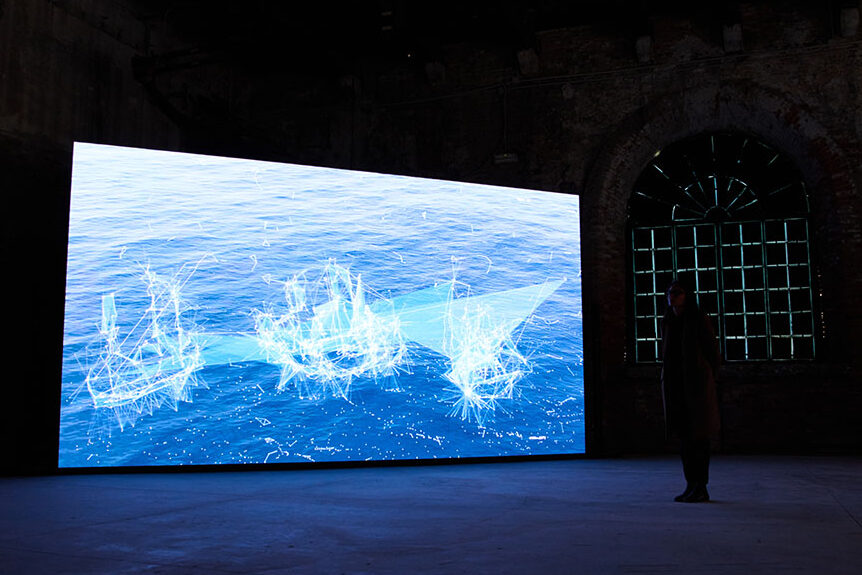
The Eye of I
With an extensive background in art and art history, and various notable works to his name already, including ‘Id-Dgħajjes tal-Fidili’ (‘The Boats of the Faithful/Fools’), Ph.D. graduate Matthew Attard has strengthened Malta’s position in the art world as one of the youngest artists to be chosen to represent our country’s pavilion in the Venice Art Biennale since its inception in 2017. Alongside co-curators Elyse Tonna and Sara Dolfi Agostini, Attard launched his latest project entitled ‘I Will Follow the Ship’. Utilising eye-tracking technology to record eye movement and translate such data algorithmically into points in space, Attard is able to produce a distinctive, very systematically precise yet almost haphazard-looking imagery which resembles the Mediterranean’s high concentration of ship graffiti as found in Malta.
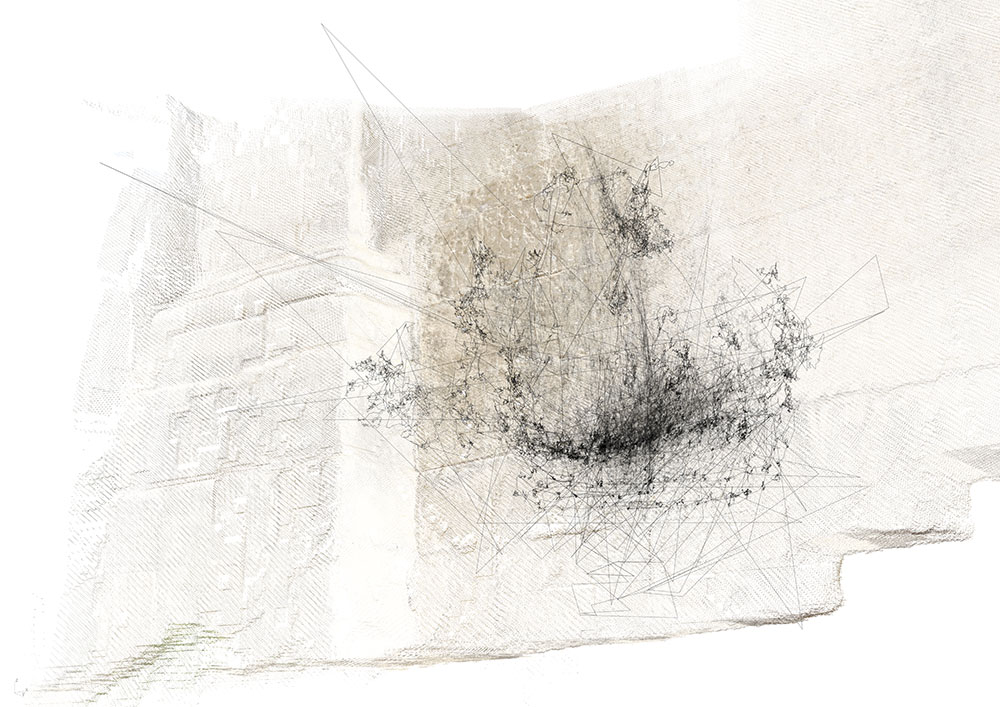
© Matthew Attard and Galleria Michela Rizzo
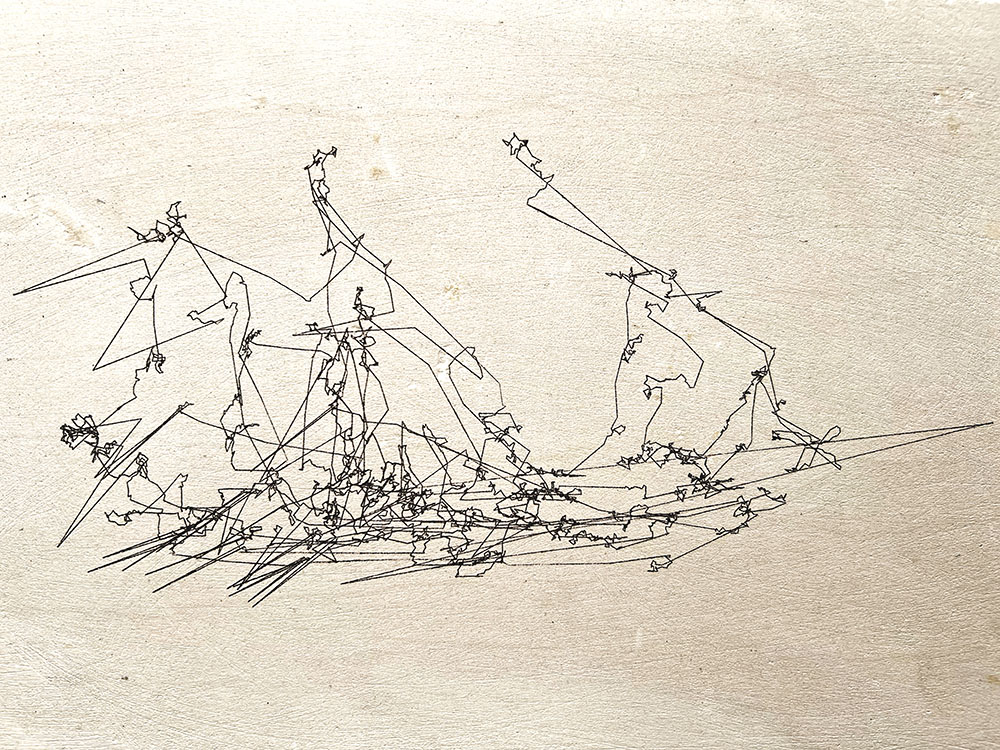
© Matthew Attard and Galleria Michela Rizzo
With such a unique, perhaps even innovative method of producing art, Attard’s interest in the technology has evolved from a concept to attempting to eliminate the ‘skill-gap’ in artistic production by doing away with the hand itself. Attard employs the eye as a tool for drawing, a choice which, in itself, aids the delivery of his work’s underlying social message – to see and not turn a blind eye to social injustice. Attard is aware of the importance of the supposedly simple act of seeing in our ever-increasing, global capitalist culture, with ‘systems in place designed to monetise our every eye movement’. Seeing ensures control, whether for those who see or for those who influence what one sees. This is what George Orwell suggested in Nineteen Eighty-Four through the quote ‘Big Brother is watching you’, as well as Harold Pinter via the underlying implications surrounding the breaking of Stanley’s glasses in The Birthday Party.
Apart from the ship drawings, then, is Attard’s very intelligently designed ‘tracking eye’, appropriately named ‘Looking/Seeing/Drawing’. The piece gives an initial sense of unease to viewers who assume that the eye is watching them. This effect is perhaps maximised when considering how the work towers in comparison to even the most vertically gifted of humans. But something interesting happens with this work in particular. As Attard anticipated and indeed witnessed, people attempted to tamper with the eye out of a discomfort of being watched. Once they came to realise that this wasn’t the case, the viewers could take a moment to relax, think, and assure themselves that they were in control. In this sense, the work returns control to the audience, elevating the self from being seen to seeing.
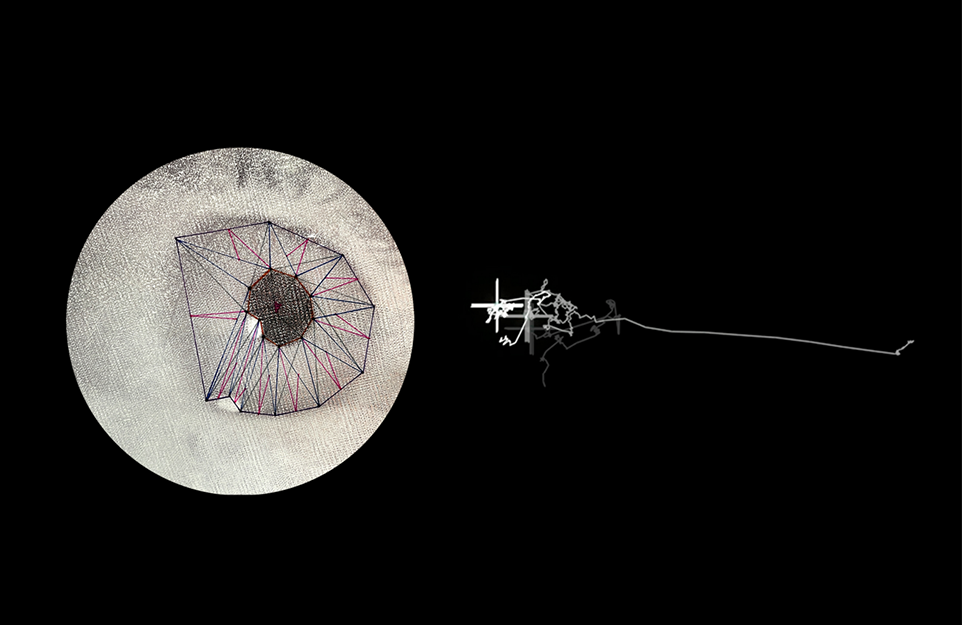
© Matthew Attard and Galleria Michela Rizzo
Nourishing the Artistic Spirit
As commissioner and project leader of the Malta Pavilion, Romina Delia, on behalf of Arts Council Malta, has worked to ensure that students receive opportunities in the arts that she would have loved to experience as a student herself. This comes in the form of the Erasmus Student Exchange – a traineeship available to students both at UM and MCAST who wish to further nurture their personal interest in the contemporary art scene. Students would be immersed in the exhibition’s international space, where they can gain invaluable knowledge and experience relating to the day-to-day workings of the Malta Pavilion, and to a larger extent, the ins and outs of the art world and its latest developments.

Take on these international experiences. It will make you who you want to become.
Romina Delia
Students who took up this opportunity in the past reported extreme satisfaction, with some even opting to fly out to Venice even twice or three times a year, given available funding. Networking opportunities are also in abundance. Trainees of the programme can interact with various individuals, such as foreign site officers (art students themselves with whom they would be working closely), the curator, and, of course, other artists.
The Mountain
At its core, the Biennale is a highly ambitious, and hence collaborative, event. The Malta pavilion itself, as Delia describes, was and still is ‘a big project, like a mountain’, but one that could only have initially been realised ‘step by step’ through hard work, perseverance, and consistent and ever-increasing collaboration. ‘You need to build trust and understanding’, Delia says, and this sense of collaboration is what permeates as a common factor throughout the flurry of different cultures coming together in the Biennale.
Perhaps just as daunting as setting up a national pavilion (okay, maybe more so) is how one decides to progress professionally. This too can feel like a mountain, but all the same, budding artists are encouraged to take the initiative to really make an impactful step into actualising their dreams. The Venice Art Biennale, and the fruitful experience it offers by providing a glimpse into how the art world operates, could be that step. As Delia says, ‘take on these international experiences. It will make you who you want to become.’ There is certainly great truth in this, after all, you need to start if you want to grow.
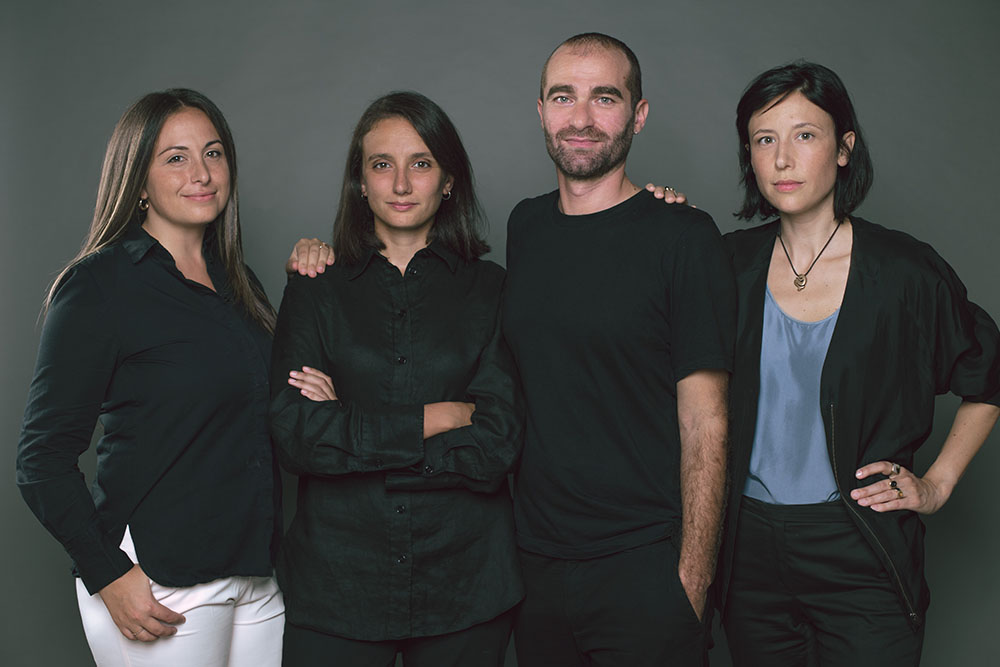
Photo by: Therese De Bono





Comments are closed for this article!